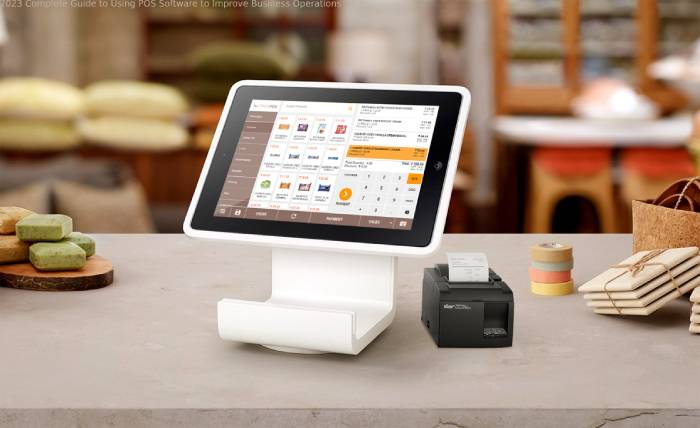2023 Complete Guide to Using POS Software to Improve Business Operations

2023 Complete Guide to Using POS Software to Improve Business Operations
The efficient administration of point of sale (POS) Software operations is essential in today’s fast-paced company environment to guarantee flawless
transactions and productive business processes. POS software simplifies customer service, inventory management, and sales. In this post, we’ll examine the main advantages and features of POS software and provide
a step-by-step tutorial on how to use it to improve your company’s standards.
Table of Contents
How to Choose the Best POS Software:
a. Determine Your Business’s Needs: Determine your precise needs, such as inventory control, reporting tools, and system integration, as well as sales monitoring.
b. Investigate your options: Compare the features, costs, scalability, and user reviews of various POS software options.
c. Think about personalization: Look for customized software to meet your specific company needs and let you change user roles, item categories, and workflows.
Setting up the POS System:
a. Hardware requirements: Check to see if your hardware, like cash registers, barcode scanners, and receipt printers, is compatible with the POS software you have selected.
b. Software installation and configuration: Ensure the software is connected to your hardware and network by installing and configuring it according to the vendor’s instructions.
c. Set up a thorough database by entering data on the products, pricing, tax rates, and employees.
Taking care of inventory
a.Inventory management capabilities in the program may be used to track stock levels, automate restocking, and get alerts when inventory levels are becoming low.
b. Barcode scanning: Using barcode scanners to rapidly and precisely update product numbers and data to streamline inventory.
c. Stock reconciliation: To find inconsistencies and avoid stockouts or overstocking, run stock counts and reconcile physical inventory with the system’s data regularly.
Taking care of sales and payments:
a. Adding items to the shopping cart: Teach your team how to use the program quickly to add goods or services for customers.
b. Payment processing: Become familiar with the various payment options the software accepts, including cash, credit cards, mobile payments, and gift cards.
c. Creating receipts: Ensure the program is set up to automatically print or email receipts that include comprehensive details about your purchases, discounts, and payment methods.
Data Analysis for Sales:
a. Reporting and analytics: Use the software’s reporting features to learn about staff performance, popular items, and sales patterns.
b. Customised reports: Create reports that are focused on particular parameters that are crucial to your company, including daily sales, revenue by category, or clientele characteristics.
c. Data-driven decision-making: Use the information gleaned from the program to help you decide what products to sell, how much to charge, and other business-related matters.
Achieving Outstanding Customer Service
a. Customer database: Use the CRM (customer relationship management) tools in the program to keep track of customers’
information, past purchases, and contact information.
b. Loyalty programs: Integrate loyalty programs into the software to recognize and reward patronage, keep track of points,
and provide tailored discounts.
c. Effective returns and exchanges: Teach your team how to use the return and exchange functions of the software to handle client returns
or exchanges swiftly and accurately.
Also read:- Newest Software Trends for Billing and Invoicing







